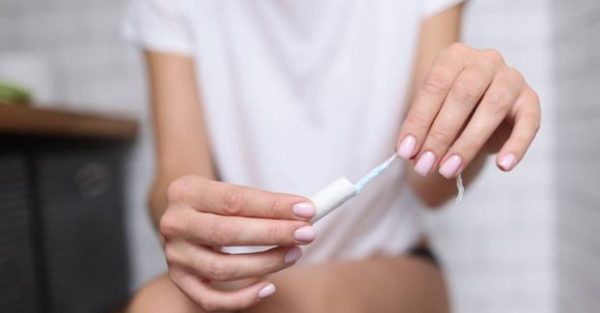Lifestyle
6 myths about tampons you need to stop believing

A tampon is a menstrual hygiene product that can be inserted into the vaginal canal.
It soaks up bloody discharge and prevents leakage. However, tons of fake information surrounds the product that often prevents women from using it.
Read on to debunk myths about tampons.
Myth 1: Tampons can get lost inside
The vagina ends at the cervix which demarcates it from the uterus. So it cannot get lost in there. Furthermore, when you insert a tampon, the string attached to it can hang outside. You can simply extract the tampon with a little effort and discomfort.
Myth 2: Tampon should be changed each time you pee
The fact is that the vaginal canal and the pee hole are different and many women do not know this about their own anatomy. The ending of the urethra resides slightly higher than the vaginal canal opening in which you insert a tampon or other menstrual product like cups. Hence, when you pee, the tampon will not get wet with your pee.
However, it does not mean you do not have to change the tampon from time to time. Depending on how heavily you are bleeding, you must change it every four to eight hours, according to an FDA article.
Myth 3: Tampon takes your virginity
A study in Healthline says that virginity is a social construct. Several studies have concluded that ‘hymen breaking’ is a myth used to verify a woman’s ‘purity’, usually before marriage.
Moreover, a hymen can stretch or tear even when you indulge in hardcore physical activities. Hence, the myth of tampons taking your virginity is just not true. You should not hesitate to use tampons because of this fake information.
Myth 4: The risk of TSS is less with organic tampons
Toxic shock syndrome is a life-threatening condition that does not depend on whether your tampon (pad vs tampon) is made of organic or synthetic material. An article in USA Today mentions that leaving tampons inside for more than 8-12 hours constitutes a higher risk for a woman getting affected by TSS. But the same is true for sanitary napkins. Even menstrual cups are supposed to be emptied and cleaned every 8-12 hours.
Whether you use a tampon made of 100% cotton or synthetic substance, it is a personal choice based on your comfort, and accessibility of the product. Also, TSS is rare and treatable if caught early.
Myth 5: You should not sleep with a tampon inside
A Tampax article says that your vagina has no clue whether you are awake or sleeping. Therefore, as long as you follow the eight-hr rule of changing, you are fine to go to bed with it.
Myth 6: There is a specific age for using a tampon
There is no age bar for using a tampon. You can use it on your first period, the first day of your menstrual cycle. It all depends on whether you feel comfortable using the product. This is true for any menstrual product.










